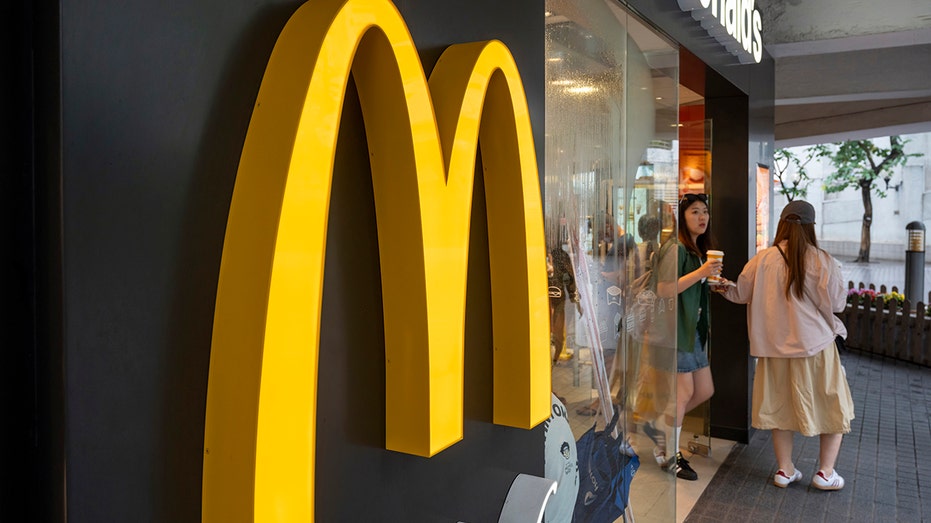Fast-food Workers Must Work Nearly An Hour To Afford Meals They Serve

Fast-food employees are continuing to afford necessities as prices remain elevated. To afford fast-food meals at the places they work, it requires more than double the number of hours of the average worker, according to a recent report.
It underscores a broader economic issue: "The affordability crisis has reached every corner of the food economy, including those working within it," Sylvain Charlebois, professor and senior director of the Agri-Food Analytics Lab at Dalhousie University in Halifax, Nova Scotia, Canada, told FOX Business.
In a recent study, LendingTree analysts discovered that employees earning the average U.S. wage would need to work 21.2 minutes to cover the cost of a flagship fast-food meal, which is $11.56 on average across the 50 largest metros. Meanwhile, fast-food workers would need to work 46 minutes to pay for the same meal.
The analysts utilized the U.S. Bureau of Labor Statistics May 2024 Occupational Employment and Wage Statistics survey to gather average hourly and annual wages for fast-food and counter workers. They compared that against the average wages for all occupations, both nationally and in the 50 largest metros.
FAST-FOOD CHAIN CLOSING UP TO 200 'UNDERPERFORMING' LOCATIONS
"No one has ever expected to get rich off of fast-food wages, but the fact that these workers can’t even expect a livable wage is troubling," LendingTree Chief Consumer Finance Analyst Matt Schulz said. "Unfortunately, the situation isn’t likely to get better anytime soon."
In the 10 U.S. cities where the gap between pay and livable wage is the largest, fast-food workers are falling more than 42% short of the money they need to cover living expenses. They would need to work more than 70 hours per week to afford the basic living expenses.
(Robert Gauthier/Los Angeles Times via Getty Images)
In Fresno, California, where workers face the smallest livable wage gap at 23%, they would still have to work more than 50 hours a week just to earn enough to cover expenses. Fast-food workers in Fresno also need to work 66.7% longer than people earning the average area wage to afford the same food, according to the report.
"The fact that a fast-food worker must now work nearly an hour just to afford the very meal they are preparing underscores a growing structural disconnect between wages and the cost of living," Charlebois said. "This isn’t just about inflation, it’s about wage stagnation, shrinking margins in the food-service sector and a labor model that’s becoming unsustainable."
CALIFORNIA FOOD CHAINS LAYING OFF WORKERS AHEAD OF NEW MINIMUM WAGE LAW

A worker takes an order at an In-N-Out Burger in Azusa, Calif. (Robert Gauthier/Los Angeles Times via Getty Images)
Kelly Beaton, the chief content officer at the Food Institute, said there are complexities to fixing this issue, noting that operators are also facing immense pressure on their already thin margins.
"We’ve almost reached the point where there’s no ideal answer for worker pay in the fast-food industry. For operators, the cost of food and labor keep rising, and restaurant chains are increasingly opting to invest in technology like kiosks rather than pay $15 or more per hour, a pay rate most restaurant operators feel simply isn’t sustainable from a financial perspective," Beaton said.

(Sebastian Ng/SOPA Images/LightRocket via Getty Images)
In order to pay workers better, Beaton said that restaurant chains would need to reduce the number of employees they have and invest more in technology like kitchen automation. This would allocate more money to better pay the workers they have.
"But I have yet to meet a fast-food restaurant operator who feels comfortable paying an hourly rate approaching $20 an hour," Beaton added.
GET FOX BUSINESS ON THE GO BY CLICKING HERE
As of May 2024, the median hourly wage for food and beverage serving and related workers was $14.92, according to the Bureau of Labor Statistics. In California, a law was passed last year boosting the minimum wage for fast-food workers in the state to $20 an hour, affecting restaurants that have at least 60 locations nationwide, except those that make and sell their own bread. That boost, though, forced a slew of restaurants to increase prices, cut employee hours and even close some locations.
This comes as the U.S. economy contracted for the first time in three years in the first quarter of 2025, increasing the chances of the nation falling into a recession, which is two consecutive quarters of negative economic growth. Recessions are often characterized by high unemployment, low or negative GDP growth, falling income and slowing retail sales.


